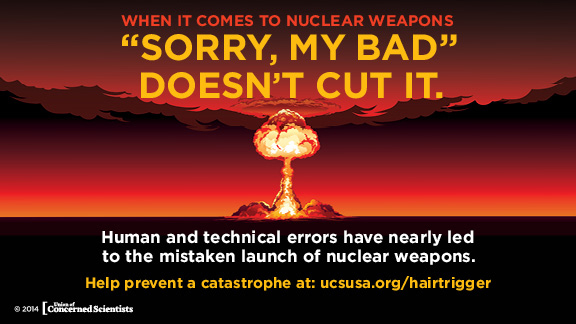
Don’t Normalise Nuclear Weapons and War
— Abolish Them
Ray Acheson / Women’s International League for Peace and Freedom
(April 19, 2022) — As Russia’s brutal invasion of Ukraine goes on, Putin’s early warnings about the possible use of nuclear weapons have not faded into the background. Instead, over the past month, it seems that many alleged “experts” and Western mainstream media outlets have been trying to normalise the idea of a nuclear attack.
This, in turn, helps to normalise the possession of nuclear weapons and even the prospect of nuclear war, while also diminishing the experience of those gravely suffering from the bombing of towns and cities with explosive weapons right now. We must refuse to accept this continuum of violence and work to abolish all of it.
At the outset of his invasion of Ukraine, Russian President Vladimir Putin declared that other countries “will face consequences greater than any you have faced in history” if they intervened.
A few days later, he ordered Russian nuclear forces to be put on a heightened alert status. Former Russian President Dmitry Medvedev later outlined possible scenarios for the use of nuclear weapons and Russian Defence Minister Sergei Shoigu said that maintaining “readiness of strategic nuclear forces” remains a priority. A Russian government spokesperson has since said that Russia would only consider the use of nuclear weapons if there was an “existential threat” to Russia.
The words and actions of Putin and other Russian officials have elevated the risks and dangers of nuclear war back into mainstream consciousness. But the threat of nuclear weapons is not limited to the Russian government.
Eight other governments — those of China, Democratic People’s Republic of Korea, France, India, Israel, Pakistan, the United Kingdom, and the United Kingdom and the United States — also possess nuclear weapons, and US nuclear bombs are stored on the territory of five other North Atlantic Treaty Organisation (NATO) members — Belgium, Germany, Italy, Netherlands, and Turkey.
Each and every one of these bombs is a threat to peace and security. Nuclear weapons are not abstract “tools” that maintain global peace and security. They are weapons of mass destruction. They create instability, enable horrific violence, and risk life on the planet.
As the Human Rights Committee declared in 2018, nuclear weapons “are of a nature to cause destruction of human life on a catastrophic scale that is incompatible with respect for the right to life.”
Yet it seems as if mainstream media and so-called experts from nuclear-armed countries are trying to normalise this threat, suggesting that yes, Putin might use nuclear weapons, and maybe the consequences wouldn’t be as bad as some suggest.
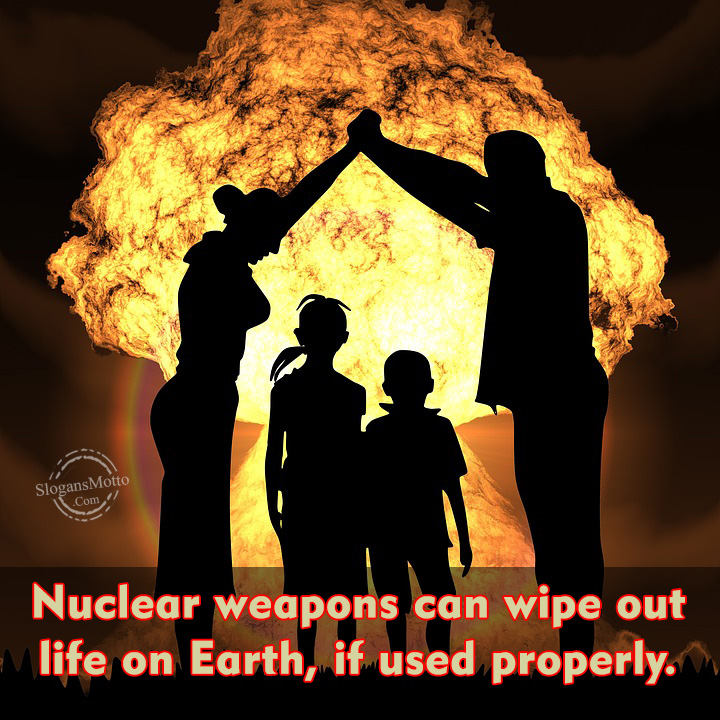
The Techno-speak of “Tactical Nuclear Weapons”
There have been many demands for NATO to impose a “no-fly zone” over Ukraine to end Russia’s airstrikes against Ukrainian cities, with little regard for the fact that this could very well lead to the use of nuclear weapons by Russia or all-out nuclear war. Instead, some politicians and commentators are suggesting that a no-fly zone is worth the risk of Russia using what are misleadingly called “tactical” nuclear weapons.
Others are escalating the rhetoric of potential nuclear war, arguing that Putin is “irrational” and likely to use them, or that the Russian government sees a nuclear exchange as a “viable strategy”.
In this apparent attempt to either push for or at least normalise the prospect of nuclear war, much of the focus is on the type of nuclear weapon that Putin is “expected” to use. The New York Times describes tactical nuclear weapons as “smaller bombs,” “lesser nuclear arms,” “less destructive by nature,” “much less destructive,” and having “variable explosive yields that could be dialed up or down depending on the military situation.”
Even while acknowledging that one of these weapons, if detonated in Midtown Manhattan, would kill or injure half a million people, the Times suggests that the use of these weapons is “perhaps less frightening and more thinkable.”
The article says the billions of dollars that the Obama administration spent on nuclear weapons went towards “improving” US tactical nuclear weapons and turning them into “smart bombs” that “gave war planners the freedom to lower the weapons’ variable explosive force,” would have a “high degree of precision,” and would lower “the risk of collateral damage and civilian casualties.”
Thus, even in an article warning that tactical nuclear weapons could lead to lowering the threshold for their use, it takes up significant space and employs a range of descriptors to suggest that these weapons would cause less destruction if used.
Focusing on the details of the size or type of bomb, Russian nuclear forces expert Pavel Podvig notes, misses an important point: “That bringing nuclear weapons into this conflict, in whatever shape or form, ought to be unacceptable, deplorable, and criminal.” Nuclear war-gaming distracts from this message, he argues, shifting the discussion in the direction of what weapon could be used and how “effective” it could be.
What it does is it normalizes nuclear weapons, making it look like this is all about cost and benefit, political calculation, or military utility.” These discussions condition people into believing that all this is somehow normal. “Let’s keep the message simple,” Podvig urges. “Even the thought of involving nuclear weapons in this conflict should be considered unacceptable.”
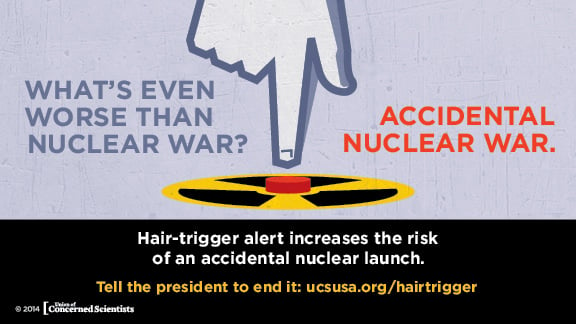
The Reality of Nuclear Violence
Measured in terms of destructive force and capacity to kill, there is nothing small about any nuclear weapon.
Russian tactical nuclear weapons have an estimated yield of 10 to 100 kilotons. The yield reflects the amount of energy released when a nuclear weapon explodes. One kiloton has an explosive force equivalent to that of 1,000 metric tons of TNT.
The bomb detonated by the United States over Hiroshima in 1945 was estimated to be about 15 kilotons; the one over Nagasaki was 22 kilotons.
Approximately 140,000 people died from the bomb in Hiroshima and 70,000 in Nagasaki by the end of 1945. Many more died after radiation and burns.
The experience of a nuclear weapon detonation says even more than the numbers.
Setsuko Thurlow, who was 13 years old at the time of the Hiroshima bombing, witnessed her city “blinded by the flash, flattened by the hurricane-like blast, burned in the heat of 4,000 degrees Celsius and contaminated by the radiation of one atomic bomb.”

She has described the experience in vivid detail through countless testimony:
A bright summer morning turned to dark twilight, with smoke and dust rising in the mushroom cloud, dead and injured covering the ground, begging desperately for water and receiving no medical care at all. The spreading firestorm and the foul stench of burned flesh filled the air.
Miraculously, I was rescued from the rubble of a collapsed building, about 1.8 kilometres from ground zero. Most of my classmates in the same room were burned alive. I can still hear their voices calling their mothers and God for help.
As I escaped with two other surviving girls, we saw a procession of ghostly figures slowly shuffling from the centre of the city. Grotesquely wounded people, whose clothes were tattered, or who were made naked by the blast.
They were bleeding, burned, blackened, and swollen. Parts of their bodies were missing, flesh and skin hanging from their bones, some with their eyeballs hanging in their hands, and some with their stomachs burst open, with their intestines hanging out.
Within that single flash of light, my beloved Hiroshima became a place of desolation, with heaps of rubble, skeletons and blackened corpses everywhere. Of a population of 360,000—largely non-combatant women, children, and elderly — most became victims of the indiscriminate massacre of the atomic bombing.
This is the immediate reality of nuclear weapons. There are also long-term, intergenerational effects. Cancer rates among survivors skyrocketed in the years after the Hiroshima and Nagasaki bombings. Women were particularly affected by the radiation, and pregnant women experienced higher rates of miscarriage and impaired growth.
Whether the alleged experts call them strategic or tactical, big or small, the experience of the detonation of even a single nuclear bomb will be catastrophic. Just as it was for those in Hiroshima and Nagasaki; just as it was for everyone whose lands and waters were tested upon in Australia, Kazakhstan, Kiribati, Marshall Islands, Moruroa, United States, and many more locations. And there is perhaps forever the trauma and moral injury — individual, social, political, and cultural.

The Madness of MAD
The horrific violence described above is from one nuclear bomb. But the core nuclear policy of all nuclear-armed states — so-called “nuclear deterrence” — is that it relies on the idea of mutually assured destruction (MAD). The strategic plans for the use of nuclear weapons envision nuclear exchange.
The theory is that because such an exchange could end up destroying the entire planet, no one would dare to use them. This is alleged to have maintained “global peace and security” and “geostrategic stability” since the end of World War II.
Except, as we are seeing right now, nuclear weapons have not prevented war. They are actively facilitating Russia’s war on Ukraine. And Ukraine is not the first proxy war fought between the nuclear-armed states.
For the last seventy years, the United States and Soviet Union/Russia have been battling for supremacy primarily using the bodies of people from other countries. In many of these wars, as in Ukraine, rather than fight each other directly, one nuclear-armed state would arm those resisting the other nuclear-armed state.
While deterrence theorists try to argue that the situation in Ukraine shows the validity of their myths—that nuclear weapons are deterring NATO from imposing a no-fly zone or declaring war with Russia — the reality is that nuclear weapons have only made a horrific war even more dangerous.
The solution to this war is not escalation. It is creating space for and enabling an environment for, dialogue and negotiation. But nuclear weapons stand in the way of peace talks because they are positioned in military doctrines as even more violent options to try to “win” a war. And in this attempt to “win,” there lies the possibility of nuclear war.
That same Times piece that talks about “small nuclear bombs” goes on to acknowledge that the use of such weapons could well lead to nuclear war. “A simulation devised by experts at Princeton University starts with Moscow firing a nuclear warning shot; NATO responds with a small strike, and the ensuing war yields more than 90 million casualties in its first few hours.” Millions more would die in the months to come. The climate crisis will be exponentially exacerbated; there could be a disastrous decline in food production and a global famine that might kill most of humanity.
As the 1980s film War Games prophetically declared, “The only winning move is not to play.” Former US and Soviet leaders Reagan and Gorbachev acknowledged that a nuclear war cannot be won and must never be fought. This was recently reaffirmed by five nuclear-armed states.
Reagan and Gorbachev also agreed “that any conflict between the USSR and the US could have catastrophic consequences;” thus, “they emphasized the importance of preventing any war between them, whether nuclear or conventional” and said that they would “not seek to achieve military superiority.”
But the nuclear-armed states still seek “military superiority” and sustain a system in which the use of nuclear weapons is possible.
The very existence of nuclear weapons makes their use possible. As long as these weapons exist, there is a risk that they will be detonated. As long as they exist, they will be used to threaten and intimidate.
As long as they exist, they will continue to harm people where they are made and where they have been tested and produced — primarily on and near Indigenous nations and communities of colour.
As long as they exist, they will extract billions of dollars towards their maintenance, modernisation, and deployment, when that money is so desperately needed to provide for the well-being of people and the planet, now endangered also by climate change.

A Continuum of Violence
The normalisation of nuclear weapons is also part of the larger, historical project of normalising war.
In his book The Doomsday Machine, whistleblower and former military analyst Daniel Ellsberg explains that nuclear weapon policies grew out of the justifications for bombing cities and civilians during World War II. The willingness, and even desire, to incinerate civilians and destroy civilian infrastructure as part of the war resulted in the practices of firebombing and blanketing wide areas with explosive violence.
This approach characterised the latter part of the war, with major civilian centres being deliberately targeted by allied forces long before the US detonated nuclear bombs over Hiroshima and Nagasaki.
This history provides a disturbing story of how practices previously held abhorrent become normalised during conflict. How what was once held as anathema to “civilised behaviour” becomes entrenched in doctrine and strategy.
The war in Ukraine is not unique in terms of suffering caused. War is always hell. In particular, the bombing of towns and cities causes horrific harm.
As Putin’s war in Ukraine is showing again, the effects of the use of explosive weapons in populated areas are indiscriminate, with a staggering proportion of death and injuries inflicted on civilians. The explosive blast and fragmentation kill and injure people in the area where they detonate, and damage objects, buildings, and infrastructure.
Victims and survivors of explosive weapons can face long-term challenges of disability, psychological harm, and social and economic exclusion. Destruction of infrastructure vital to the civilian population, including water and sanitation, housing, schools, and hospitals, deprives civilians of access to basic necessities and results in a pattern of wider, long-term suffering.
The potential use of nuclear weapons is an extension of the explosive violence we’re already seeing in Ukraine, Syria, Yemen, Ethiopia, and elsewhere, and that we already saw in Iraq and Afghanistan, among others. The focus on a potential nuclear war also risks distracting from the lived reality of suffering from “conventional war” going on right now.
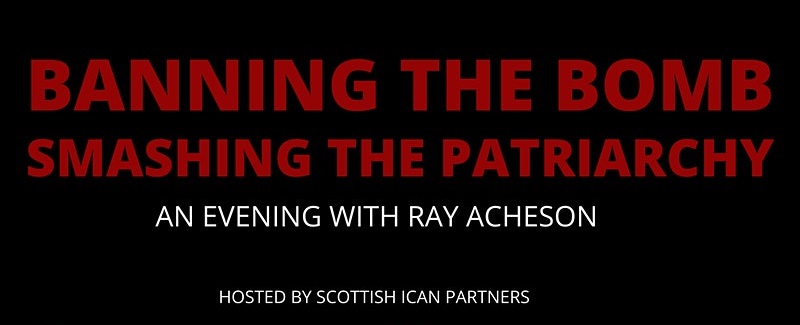
The Persistence of Patriarchy
This mindset — that scores can be settled by bombing homes and hospitals, or that power can be asserted by threatening to wipe out the entire planet — is deeply patriarchal. It is based on an understanding of dominance and violence as the best ways to control and coerce others into bending to your will.
Patriarchy is reflected in every aspect of the war in Ukraine, from the conscription of men and the celebration of the warrior, to the horrific sexual- and gender-based violence being inflicted upon women, LGBTQ+ people, and children, and even to the targeting of civilians and civilian objects.
The bombardment of civilian centres is a “deeply gendered strategy with no ‘military advantage’ other than to demonstrate the failure on the part of the Ukrainian state to protect and thereby to emasculate its leadership,” argue feminist international legal experts Louise Arimatsu and Christine Chinkin.
The possession of and threat to use nuclear weapons is also profoundly gendered, with rhetoric of the nuclear-armed states consistently focused on the size of their arsenals, the vitality of their bombs, their worry of impotence if disarmed, and their dismissal of “emotions” of those concerned with the humanitarian impacts of nuclear weapons.
The patriarchy employs technostrategic language to talk about nuclear bombs, as described above, and sanitised language to talk about war—“surgical strikes,” “collateral damage,” “smart bombs”.
This patriarchal approach, which discounts and refuses to engage in discussions about the physical, legal, moral, and emotional consequences of weapons and war, has for decades effectively precluded the development of “credible” alternative narratives promoting peace and non-violence. But there are ways to confront and challenge this patriarchal perspective, and the systems of violence it upholds.
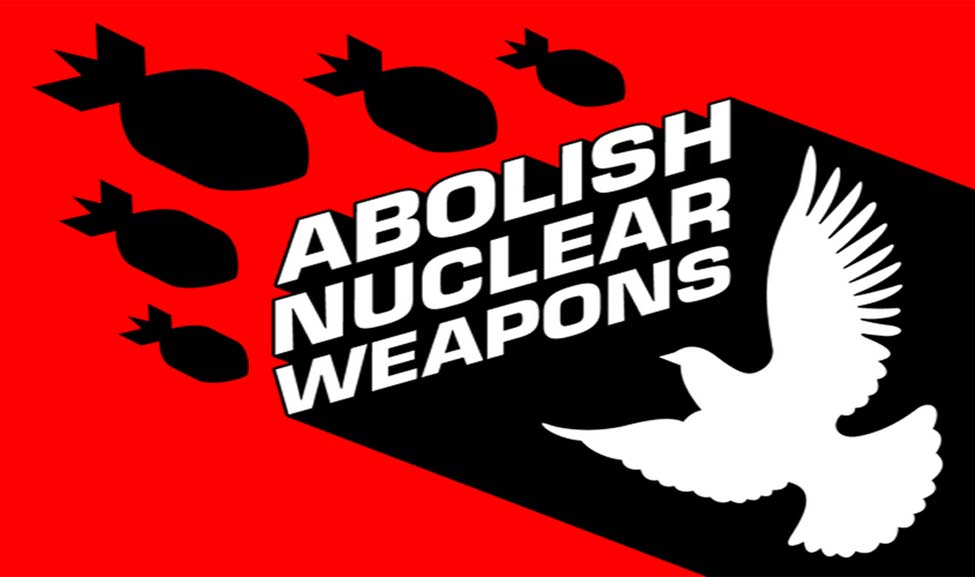
Untying the Knot of War
In a letter to US President Kennedy during the Cuban Missile Crisis in 1962, Soviet Premier Khrushchev eloquently described the “knot of war” that their two countries had created, and warned of the risk that they might pull the knot so tight “that even he who tied it will not have the strength to untie it.” Sixty years later, that knot has been pulled tighter than ever.
Recognising the failure of the leaders of nuclear-armed states to “untie the knot”— that they cannot or will not take the necessary steps to eliminate or even reduce the risks generated by their nuclear arsenals — the vast majority of countries have revolted.
They joined forces with activists in the International Campaign to Abolish Nuclear Weapons (ICAN) to revitalise a narrative about nuclear weapons in which the catastrophic humanitarian and environmental consequences of the use of these weapons is front and centre. Governments primarily of the global south together with ICAN developed a new international agreement banning nuclear weapons.
On 7 July 2017, 122 governments voted to adopt the Treaty on the Prohibition of Nuclear Weapons (TPNW). After receiving the necessary fifty national ratifications, it entered into force on 22 January 2021. This development presents a very significant challenge to nuclear weapons and to the nuclear war machines of the allegedly most “powerful” countries in the world.
The TPNW shows what the world can do in the face of grave injustice and incredible risk. The countries and the activists leading the way in this initiative understood the urgency of dismantling the system of massive nuclear violence that their neighbours and allies have built up.
These non-nuclear-armed actors conceived of a role for themselves in this history, of helping to “untie the knot” by working to change the legal, political, economic, and social landscape in which nuclear weapons exist.
What remains to be seen is how those most responsible for tying the knot will respond. The prohibition of nuclear weapons opens an opportunity for leaders of nuclear-armed and nuclear-supportive states to step back from the brink, loosen the knot, and engage in the process of disarmament and demilitarisation.
But the knot is not just nuclear. Nuclear weapons are just the tip of vast systems of militarised violence that have been built through more than a century of war. It all must be undone.
This must include ending the practice of using cities as battlefields. It is a violation of international humanitarian law, yet multiple perpetrators continue to bomb and shell civilians.
The Irish government is leading a diplomatic process for a declaration that would see states make commitments against the use of explosive weapons in populated areas, to enhance protection of civilians and compliance with international law. Ending the bombing of towns and cities would alleviate much of the immediate and long-term human suffering in armed conflict.
Yet even as many governments condemn Russia’s bombing and shelling of Ukrainian hospitals, homes, and school, some are trying to water down the draft political declaration’s commitments, to ensure they do not have to change any of their own policies or practices leading to grave civilian harm.
Just last week at the United Nations in Geneva, a number of states including the United States, United Kingdom, Israel, Turkey, Canada, and Republic of Korea fought against the creation of strong commitments to prevent the use of explosive weapons in populated areas or to address the reverberating or indirect and long-lasting impacts of destroying and damaging civilian infrastructure.
Many other states, however, as well as international organisations and civil society, are pushing for a strong declaration that will help save lives and prevent suffering. Along with the prohibitions of landmines, cluster munitions, and nuclear weapons, and ongoing work on preventing autonomous weapons, the work to stop explosive violence is part of a larger project of humanitarian disarmament.
Collectively, these efforts help lay the groundwork for dialing back the international arms trade, weapons production, and war profiteering. The reduction of military budgets, the redirection of funds to meeting social and planetary needs, and a turn in international relations from war to diplomacy, solidarity, and care is imperative for our survival.
In November 1940, during World War II, French philosopher Albert Camus wrote, “We can despair of existence, for we have no power over it, but not of history, where the individual can do everything. It is individuals who are killing us today. Why should not individuals manage to give the world peace? We must simply begin without thinking of such grandiose aims.”
Hope, then, is not necessarily about us as individuals being able to achieve the abolition of all forms of violence, but about the ability of us as a collective—including future generations—to drive forward the changes we need to bring peace, justice, and well-being to humankind and all relations with whom we share our lives on this planet. We can either accept and succumb to the violence, or we can work to abolish the systems and structures that enable it.
Ray Acheson is the Director of Reaching Critical Will. They provide analysis, research, and advocacy across a range of disarmament issues from an antimilitarist feminist perspective. Ray represents WILPF on the steering committees of the International Campaign to Abolish Nuclear Weapons (ICAN), the Campaign to Stop Killer Robots, and the International Network on Explosive Weapons.
Posted in accordance with Title 17, Section 107, US Code, for noncommercial, educational purposes.